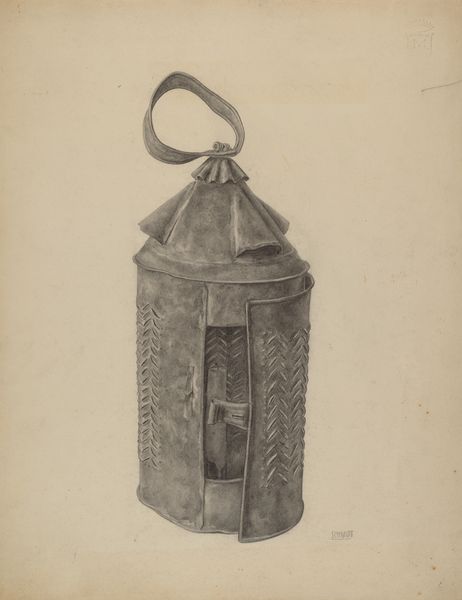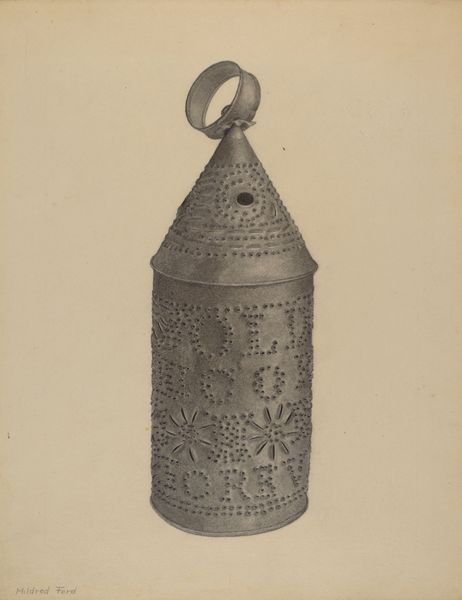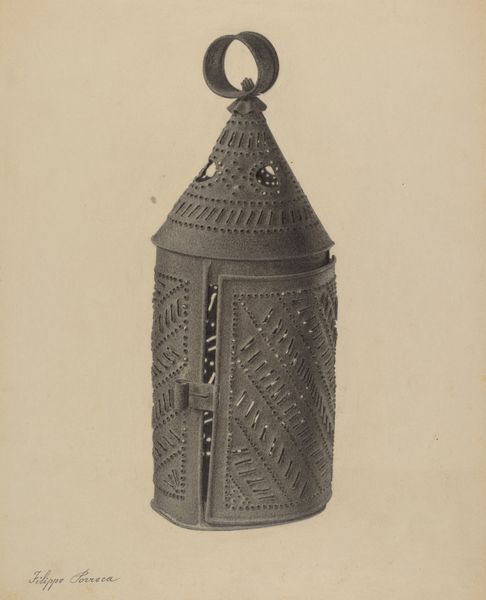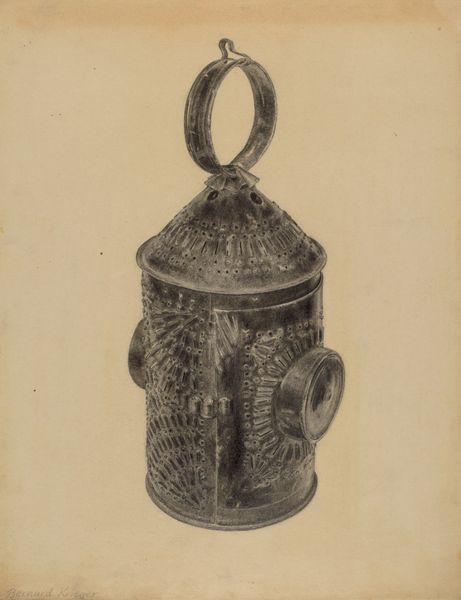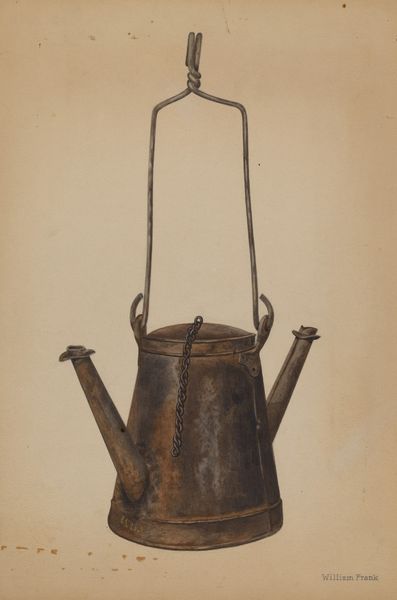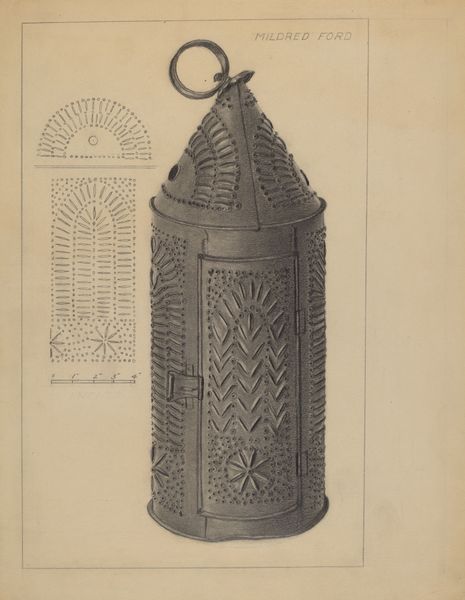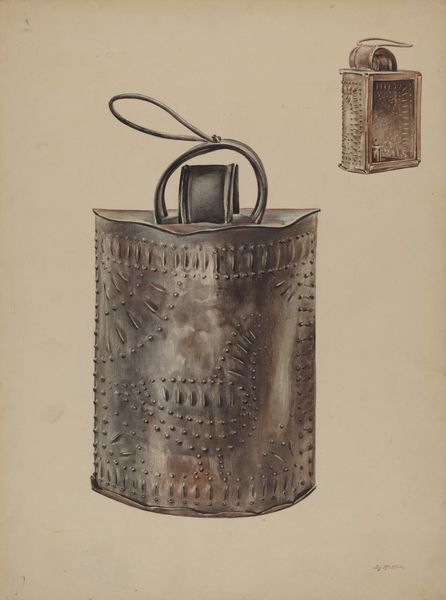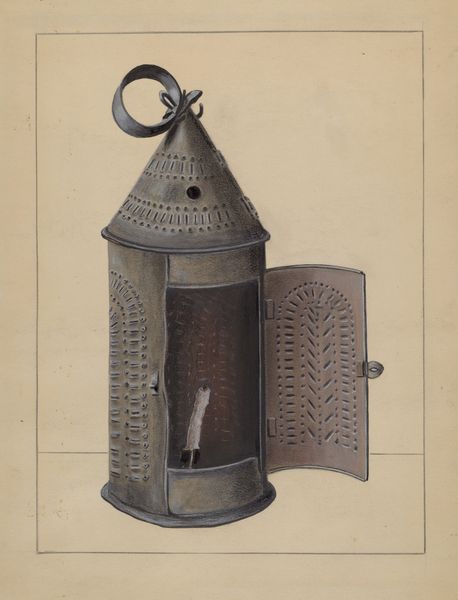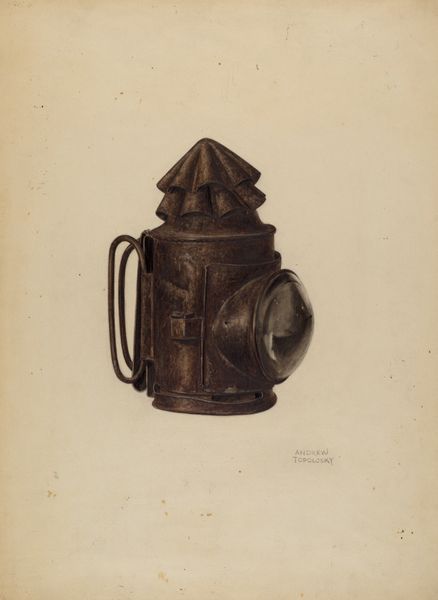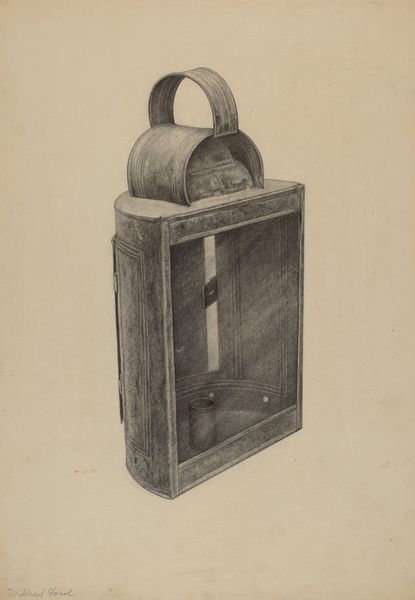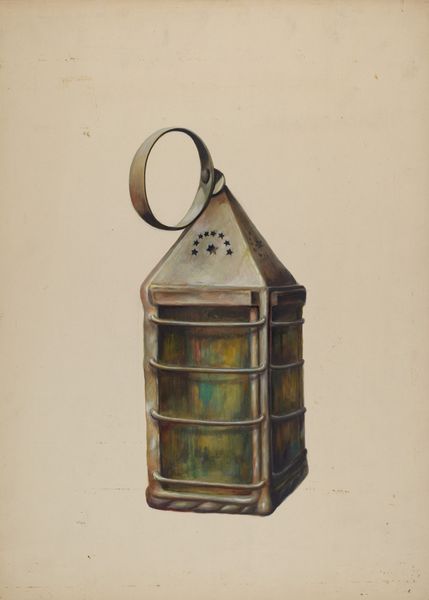
drawing, pencil, graphite
#
pencil drawn
#
drawing
#
charcoal drawing
#
pencil drawing
#
pencil
#
graphite
#
academic-art
#
realism
Dimensions: overall: 35.8 x 26.9 cm (14 1/8 x 10 9/16 in.)
Copyright: National Gallery of Art: CC0 1.0
Curator: Well, that’s rather somber, isn’t it? Almost melancholic, despite its simplicity. It reminds me of long, dark nights and… waiting. Editor: It's a pencil and graphite drawing entitled "Hand Lantern" by William Schmidt, dating from 1935 to 1942. Schmidt appears to have captured this utilitarian object with academic precision. We see light trying to escape the interior. Curator: Exactly. And the object itself—the hand lantern—speaks volumes. Consider who might have needed such a device during those years. Its purpose is so closely tied to specific historical anxieties and necessities, isn't it? The encroaching darkness, literally and figuratively. Who might have carried this, and why? Editor: One could easily envision this artifact carried by night watchmen during wartime, tasked with maintaining order during blackouts. Think about how much that everyday use shapes public space. It becomes not merely an object of utility but of authority, too. Or the domesticity of sheltering during nightly bombing runs, that candle flame an everyday reminder. Curator: And think of the inherent symbolism of light versus darkness, then set against the backdrop of global conflict and widespread socio-economic insecurity! Was this a symbol of hope during dark times, a tool for navigation, or both? I’m immediately drawn to consider the ways the war at large influenced his artistic practice during the late thirties. How were anxieties present within his daily life influencing his artistic expression, even if indirectly? Editor: That's a good point. Also note Schmidt's commitment to Realism – the detail in rendering the object and its ornamentation. He wasn't just representing a lantern, but perhaps imbuing it with a sense of importance, highlighting the everyday objects that facilitated societal function in times of duress. Curator: Do you see also a suggestion of confinement in this, though? With the flame behind those vertical bars it hints to me more than hope. It implies also of limited freedoms during conflict, like our perspectives limited to where the authorities deem fit. The use of medium in monotone as well seems deliberate. To only have light and dark during war time! Editor: A pertinent perspective, especially considering the social implications during that tumultuous time. It really shows how everyday objects can resonate differently, informed by larger social events, even within their quietude.
Comments
No comments
Be the first to comment and join the conversation on the ultimate creative platform.
